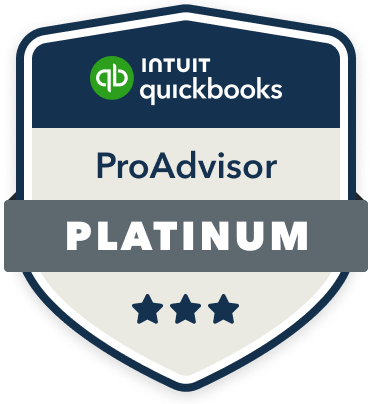
ERP Evaluation Criteria: 5 Features to Compare
Compare EDI & ERP the right way - integration, document coverage, automation, visibility, and TCO. Includes checklist, scoring matrix, and a 30/60/90 plan.
SYSTEMS AND SOFTWAREECOMMERCETUTORIALS
5 must-have features to compare in EDI & ERP systems
Ryan Behnken, Systems Specialist @ Fiskal


A practical buyer’s guide to picking the right EDI–ERP combo—what to compare, how to score it, and how to avoid chargebacks and manual rework.
It’s 4:30 PM and your biggest retail partner just flagged your ASN as late. The PO flowed from ecommerce to ERP, but the EDI map broke on a unit-of-measure mismatch. Ops is firefighting, finance can’t post the invoice, and a chargeback is on its way. This isn’t a one-off—this is what happens when EDI and ERP don’t truly fit.
Teams lose hours every week reconciling disconnected systems, and peak season magnifies every exception. One failed mapping ripples into penalties, missed ship windows, and unreliable COGS—turning growth into expensive chaos.
TL;DR
This guide shows exactly how to compare EDI & ERP systems—with the five features that decide outcomes, a 10-point checklist, a weighted scoring matrix, and a post-go-live self-audit to de-risk implementation.
Along the way, you’ll see where Fiskal Finance steps in with a Cin7 Health Check and a rapid Selection Workshop to pressure-test your shortlist before you commit.
What to compare: the five features that matter
Choosing ERP + EDI isn’t about ticking boxes; it’s about whether orders flow, ASNs are timely/compliant, and finance can trust the numbers.
Five areas decide that: integration, document coverage & data quality, automation, visibility & controls, and scalability & total cost.
If you’re on Cin7 Core with partner-managed EDI, keep an eye on ownership (who maps/tests/supports)—it drives TCO as much as the license.
For each feature below, you’ll get: what it is, why it matters, how to evaluate, red flags, and a quick win.
1. Integration & openness (APIs, Connectors, iPaaS)
What it is: How cleanly your ERP connects to commerce, WMS/3PLs, marketplaces, accounting, and your EDI provider.
Why it matters: Integration quality drives touchless orders, fast error recovery, and partner onboarding speed.
How to evaluate:
API depth/rate limits; webhooks (via Cin7 Core Automation or the EDI partner)
iPaaS fit (Make/Boomi/etc.), event logs, idempotency, versioning, sandbox parity
Monitoring/alerts usable by ops (not just IT)
Red flags: Flat-file only; no retries; no audit trail; lock-in that blocks new channels.
Quick win: Validate one critical flow (PO → ASN → Invoice) end-to-end in sandbox, including failure/rollback.
Bottom line: If you can’t integrate fast, you can’t scale.
2. Document coverage & data quality (X12/EDIFACT + retailer quirks)
What it is: The transactions you must support and how strictly data is validated.
Why it matters: Weak mapping/validation = chargebacks and delays.
How to evaluate:
Supported standards and prebuilt maps; retailer label/pack requirements
Master-data alignment (items/UOMs, customers/addresses, GL)
Duplicate detection, schema validation, transformations
Red flags: Every partner is “custom”; no governance; no validation rules.
Quick win: Lock your priority set: 850/855/856/997/810/820/846/832 with explicit validations per partner.
Bottom line: Coverage + clean data prevents revenue leakage.
3. Automation & orchestration (workflows, retires, exceptions)
What it is: Rules that route, enrich, and fix data without manual work.
Why it matters: Manual exception handling doesn’t scale; automation turns volume into profit.
How to evaluate:
No/low-code rules, conditional routing, auto-reprocessing, SLA timers/alerts
Where automation runs: Cin7 Core Automation and/or the EDI partner’s platform
Exception queues with root-cause, not just cryptic error codes
Red flags: Editing raw files; no auto-retries; no SLA dashboards.
Quick win: Turn on auto-retry + alerts for your top three failure types.
Bottom line: Automation turns growth into profit, not overhead.
Why work with Fiskal (Cin7 Core + EDI)
Map & test flows with SPS/Crossfire
Standardize ASNs, labels, 3PL handoffs
Automate exceptions (alerts/retries)
Monitor/support in production
Outcome: higher touchless rate, fewer chargebacks, faster reconciliation.
4. Visibility & controls (dashboards, alerts, audit)
What it is: End-to-end PO → ASN → Invoice views with permissions, audit trails, and exports.
Why it matters: You can’t improve what you can’t see; finance needs trustworthy logs to reconcile.
How to evaluate:
Role-based dashboards for ops/finance; exportable logs; audit trails
Alerts for late ASNs, label mismatches, failed invoices, remittance exceptions
One-click drill-through from KPI to failed message.
Red flags: Opaque middleware; no lifecycle view; engineer-only logs.
Quick win: Alert on ASN lateness + label mismatches; track perfect-order rate weekly.
Bottom line: You can’t fix what you can’t see.
5. Scalability & total cost (throughput, HA, pricing model clarity)
What it is: Handling peak weeks and adding partners without exploding costs.
Why it matters: If the model breaks on volume or per-doc fees, growth gets expensive.
How to evaluate:
Peak throughput; HA/RPO/RTO; multi-entity/brand support
Pricing clarity: per doc vs per order, partner-add fees, mapping/testing, maintenance
Support SLAs; process for retailer spec updates
Red flags: Unpredictable fees; long partner-add lead times; no rollback path.
Quick win: Model cost per 1,000 orders for peak week; rehearse rollback.
Bottom line: Scale and TCO decide viability after go-live.
Why Cin7 Core fits: Core + partner-managed EDI gives you retailer-ready maps, faster onboarding, and Automation-powered alerts/retries—so integrations stay clean, ASNs are timely/compliant, and costs don’t spike at peak.
Partner-managed EDI for Cin7 Core: what to validate
On Cin7 Core, EDI is delivered by partner-managed providers. Success comes down to ownership—who maps, tests, supports, and handles changes—and the true TCO as you add documents and trading partners. Use the checklist below to validate scope, SLAs, and cost before you commit.
EDI Evaluation & Selection checklist:
Scope & coverage: Which X12 docs are turnkey vs custom per retailer (850/855/856/997/810/820/846/832)? Label/pack requirements? (940/945 optional for 3PL/WMS.)
Ownership & RACI: Who owns mapping, testing, production support, and change control? Versioning/rollback and escalation path defined?
SLAs & reliability: Incident response/restore SLAs, uptime, RPO/RTO, monitoring/alerts, auto-retries, dead-letter queues.
Integration to Core: API posture and webhooks via Core Automation, event models, logging/audit trails, finance reconciliation hand-offs.
Pricing & TCO: Per-document vs per-order model, partner-add/onboarding fees, map build/update fees, testing, monthly platform/support, chargeback exposure.
Onboarding speed: SLA to add a new trading partner; steps/lead-times; who does retailer certification?
Scale & change: Peak throughput, multi-entity/brand support, cadence for retailer spec updates, regression testing process.
Security & compliance: Data handling, certifications (e.g., SOC 2/ISO), DPA.
References & proof: 2–3 Core+EDI references in your industry; sandbox of one end-to-end flow; include a failure/rollback rehearsal.
Deliverables: Mapping spec, test plan, cutover plan, monitoring/alerting runbook, support contact model.
ERP vendor evaluation toolkit
Turn interest into a defendable ERP vendor selection process. In the recent State of Inventory Intelligence Report, it reported that many teams want modernization - 47% want automation and 43% want AI; but 62% lack the know-how and 60% aren’t sure which tools to pick.
Use this toolkit to move from notes to an actionable shortlist.
A) 10-point ERP evaluation checklist (EDI-ready)
Business fit & modules: Finance, inventory, purchasing, sales, manufacturing/light assembly as needed.
Integration & APIs: Depth, rate limits, webhooks availability (via Automation), versioning, iPaaS compatibility.
Data model: Items/UOMs, customers/addresses, tax, GL/COA; master-data governance.
Document readiness (EDI): Ability to support 850/855/856/997/810/820/846/832 with partner-managed mapping.
Workflow & automation: No/low-code rules, conditional routing, exception queues.
Observability: Role-based dashboards, exportable logs, audit trails, drill-through from KPI → failed message.
Security & access: RBAC, SSO/SCIM, environment controls, compliance posture (e.g., SOC 2/ISO).
Scalability & resilience: Peak throughput, multi-entity/brand, HA/RPO/RTO.
TCO (ERP-level): Licenses/subscriptions, implementation, integrations, maintenance; note EDI costs at a high level only.
Proof & references: Sandbox/POC with success criteria; 2–3 customer references.
B) Weighted scoring matrix
Quantify your shortlist so it’s easy to defend. Set weights for what matters (total = 100%), score each vendor 1–5 per criterion, then multiply and sum to get a comparable total.
Add a quick risk note per row, set any must-have gates (e.g., missing 856/ASN = no-go), and use TCO per 1,000 orders or onboarding SLA as tie-breakers.
How to use: Score each vendor 1–5 per row, multiply by the weight, and sum the totals.
Tip: Add notes on risks/assumptions next to each score.
C) Transaction coverage (anchor table)
Confirm you can support each stage from day one.
Note: 940/945 are optional when using a 3PL or external WMS.
D) RFP questions (risk-focused)
Use these to pin down accountability and avoid surprises.
Who owns mapping, testing, and production support day-to-day?
How do you manage versioning/rollback of maps without downtime?
Show one failed message lifecycle: detect → alert → retry → reconcile.
What are your incident SLAs and your HA/RPO/RTO guarantees?
How long to onboard a new trading partner and what’s included vs extra?
Post-go-live: "You went live - now what?"
You’ve switched on the flows; now make them durable. Start with a quick weekly health check, then work a simple 30/60/90 plan.
Self-audit (track weekly)
Touchless order rate — % of orders that flow end-to-end with no manual edits. Goal: trend up.
On-time ASN % — shipments where the 856 was sent within the partner’s window. Goal: trend up; fewer penalties.
Chargeback rate — % of orders with fines/fees (labels, ASN timing, data errors). Goal: trend down.
Exception MTTR — average time to resolve failed messages. Goal: trend down.
Invoice dispute rate — % of invoices rejected or short-paid. Goal: trend down.
30/60/90 plan (do this next)
Day 30 — Stabilize the core
Fix top mapping errors; add alerts + auto-retries on recurring failures
Stand up SLA dashboards (ASN timeliness, exception MTTR, touchless rate)
Day 60 — Reduce manual work
Automate your top three exception patterns
Add/standardize 3PL handoffs and label/pack rules across partners
Day 90 — Scale with control
Reassess TCO (per 1,000 orders; partner-add + maintenance costs)
Add advanced workflows (e.g., split ship, partial invoice)
Publish a short peak-season playbook (who does what when something fails)
Book a Cin7 Health Check — Post-Go-Live Tune-Up
Baseline your KPIs, surface the top 3 exception fixes, turn on alerts/retries, and leave with a 90-day hardening plan.
Proof
Seeing it in practice helps—here are two quick snapshots showing how the approach translates into real operational and financial gains.
Snapshot A (Ops KPI)
Situation: Retail vendor fines due to late/invalid ASNs.
Fiskal fix: Rebuilt partner maps, added ASN-lateness alerts, and enabled auto-retries on common failures.
Outcome: On-time ASN rate up; chargebacks down. (Add your numbers here: e.g., +X% / −Y%.)
Snapshot B (Finance KPI)
Situation: Invoices failing from COA and tax mapping issues.
Fiskal fix: Standardized COA mapping and added pre-invoice validation checks.
Outcome: DSO down; invoice disputes reduced. (Add your numbers here: e.g., −X days / −Y%.
Get the playbook we use, or request support if you need mapping help right now.
Frequently asked questions
What’s the difference between ERP and EDI?
ERP is your internal system of record for operations and finance; EDI is the standardized way you exchange business documents with partners. You need both working together.
Which EDI documents should my ERP support first?
Start with 850/855/856/997/810; add 820/846/832 as you mature. Use 940/945 if you run a 3PL or external WMS.
How long does EDI/ERP implementation usually take?
Simple flows with one or two partners can go live in weeks; multi-partner, multi-channel programs require phased rollouts. Validate one flow in sandbox before broadening.
How are EDI pricing models structured (per doc vs per order)?
Both exist. One order can generate multiple documents; model your cost per 1,000 orders at peak and include mapping/testing and partner-add fees.
Do I still need an EDI provider if my ERP includes basic EDI?
With Cin7 Core, EDI is partner-managed. Your provider handles mapping, testing, and production support..
How do I reduce chargebacks tied to ASN or label errors?
Validate data at source, enforce label/pack rules, and set alerts for ASN timing. Track perfect order rate and fix the top exception patterns first.
What’s the best way to onboard a new trading partner quickly?
Use prebuilt maps where possible, reuse templates, and run a sandbox proof covering PO → ASN → Invoice with failure/rollback rehearsal.
Book a Cin7 health check (recommended)
Validate mappings, automate your top exceptions, and cut chargebacks before peak season.
Prefer a guided shortlist? Schedule an EDI/ERP Selection Workshop to leave with a tailored scoring matrix, risk register, and a vendor shortlist aligned to your flows.
📞 Or call us directly: (954) 415-7895










